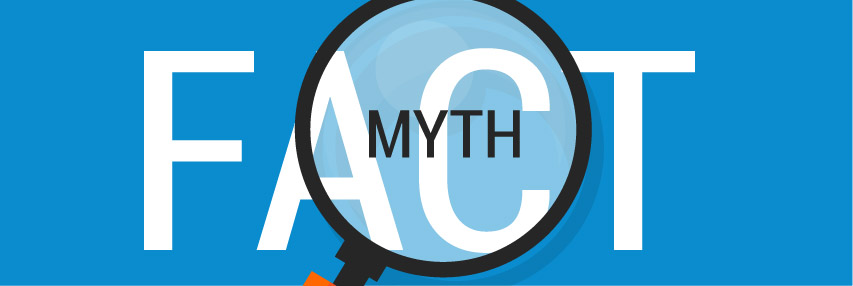3 Student Loan Myths to Leave Behind in 2014
It’s been another big year for student loans. As the $1.2 trillion in outstanding education debt continues to grow, the Class of 2014 became the most indebted ever, with recent college grads owing $33,000 on average and the number for graduate/professional degree borrowers often closer to the six-figure range.
With these kinds of numbers, it’s no surprise that student loans inspired their fair share of headlines in 2014. And while I’m always happy to see this issue garner some much-deserved attention and debate, it’s surprising to see certain student loan myths pop up again and again – myths that could be costing borrowers money, if they miss out on the real story.
So as we close out 2014, I’d like to set the record straight on a few student loan misconceptions that may have been fueled by this year’s headlines.
Myth #1: You can’t refinance federal student loans
One of the biggest student loan stories this year was the refinance bill put forward by Sen. Elizabeth Warren. The legislation, which was twice proposed and twice blocked by Senate Republicans, aimed to give more than 25 million borrowers the ability to refinance their high interest rate federal student loans with the government at today’s rates.
While I didn’t personally agree with some of the finer points of the bill, I was pleased that it shined a spotlight on high interest rate student loans. The vast majority of the $1.2 trillion in outstanding education debt is made up of federal loans, some of which haven’t offered the most competitive rates over the past several years.
However, most of the media coverage failed to explain that even though the bill failed, federal student loan refinancing is actually available now – no legislation required. While traditional lenders have shied away from offering federal loan refinancing, the option is available through SoFi and a few other companies. In fact, the majority of SoFi’s outstanding debt is made up of refinanced federal student loans.[i]
Myth #2: Federal loans always offer the lowest interest rates
Federal student loans made headlines again in July, when they experienced their second annual rate hike since the Student Loan Certainty Act was passed in 2013. With federal rates now tied to the 10-year Treasury note and scheduled to change each summer, this story didn’t come as a surprise to anyone – but it was an important reminder that even federal loans aren’t immune to rate increases.
In fact, for graduate borrowers, who typically use a combination of federal Direct unsubsidized loans and Graduate PLUS loans, this latest hike pushed federal loan rates further into less competitive territory – to 6.21% and 7.21%, respectively. And in a related story that didn’t make many headlines, in October the ongoing sequester triggered an increase to federal loan origination fees (the third one in 15 months), taking Direct PLUS loan origination fees to a whopping 4.292%.
Add to that the fact that federal loans offer one rate for all borrowers, whereas private lenders give you a rate based on your creditworthiness, and you can see why student loan refinancing has become a sought-after option for borrowers seeking a better rate.
Myth #3: Income-driven repayment is a panacea for borrowers
This summer, the Department of Education announced its intention to expand its latest income-driven program – Pay As You Earn, or PAYE – to more borrowers starting in late 2015. The program caps monthly federal student loan payments at 10% of a borrower’s income and potentially allows the remaining balance to be forgiven after 20 years in repayment.
Just like its predecessor, Income-Based Repayment (IBR), PAYE can be a useful tool for borrowers when they’re struggling to pay their loans, but it’s a myth that these plans provide a widespread solution to the student loan crisis. In fact, some borrowers may be worse off by using it.
Why? Because there’s no free lunch in lending. While PAYE may result in smaller monthly payments, it does so by extending your payment term, which means that the longer you use it, the more you’ll spend on interest. That’s why it’s crucial for borrowers with low-but-rising income (for example, doctors in residency) to check in every so often and switch to a standard repayment plan as soon as they can afford it.
And when you reach that inflection point, refinancing is another option that may lower your monthly payments while actually saving you money on total interest.
2014 was also quite a year for SoFi. In addition to extending our product lineup to include home loans and personal loans, we surpassed more than $1.3 billion in loans for more than 15,500 borrowers, making us the largest provider of student loan refinancing out there today. It’s exciting to be part of an industry that is using new methods and technology to solve traditional consumer finance problems.
And because we’re committed to helping borrowers meet their financial goals, we’ll continue to beat the drum when it comes to dispelling student loan myths. Every borrower should have all of the relevant information to help them make smart decisions about their finances, and we feel a responsibility to help make sure that happens.
[i] It’s important to know that some federal loans offer forgiveness programs that don’t transfer to private lenders, so before refinancing federal loans you should check to see if you’re eligible for these benefits. But if these features don’t apply to you – and saving money is your priority – it’s worth exploring whether you can qualify for a lower rate on your federal loans.




I believe Senator Warren’s proposal aimed to refinance private student loans in addition to federal student loans.